Is your horse overweight? Did the vet tell you to STOP FEEDING TREATS!? You know your horse needs to lose weight and get back in shape, but How to do this without treats?
Why stopping giving Treats is a good idea
It seems like a solution to stop offering your horse treats when he’s overweight, right? If you’re giving your horse lots of dense-calorie treats without asking him to burn them off, it’s probably a good idea to stop giving those.
Take a good look at what you consider a treat: Is it calorie rich? Is it nutrition value low? Or is this just the common human approach of “treats”?
We -people- usually mean candy or other low nutrition value/high calorie foods. Right?
If you’re using real treats like peppermints (although how much calories would all the peppermints in one training contain?) are they really having that much impact on your horse’s obesity?
Or can you influence his weight with changing his management? Usually decreasing hay or grass intake and minimizing dinner grain portions have a much bigger (pun intended!) impact on your horse’s weight!
If your horse turned into a Mugging Monster, you can turn that around quickly!
Why stopping giving Treats is a bad idea
When we train horses (R- or R+) we still need to reinforce the desired behaviour from time to time. If we don’t, and the behaviour is not intrinsically reinforcing, the behaviour gets extinct.
Traditional trainers need to use their whips, sticks or ropes once in a while (depending on how much of a threat the aversive still is) to keep their horses in line. ‘The horse needs a little reminder,’ is what they say.
Same goes for positively reinforced behaviours: we also do have to remind our horses (with a treat!) what we want from them (movement).
We need to do that to keep motivation high! Whether that’s in R- or in R+. Or we’ll lose it.
When we clicker trained our horses to exercise and offer movement (walk, trot, canter, jumping, gallop), we still have to offer a treat with enough value, once in a while to keep their motivation high. That’s why it’s a bad idea to stop giving treats to (overweight) horses in training.
If you’re a clicker trainer and you suddenly stop giving treats as reinforcement, you’ll disappoint your horse. He’s expecting food rewards. When he doesn’t get them he can get demotivated! That’s another big reason why stopping with treats is a bad idea.
You can experiment with other reinforcers: things your horse will value. When you get more behaviour (movement) you’ve successfully reinforced your horse to move. When you get less behaviour or sluggish movements or a slower response time to your cues, you know you weren’t actually reinforcing the behaviour and you need to find a better appetitive!
Read my blog about How to Move Your Horse with A Click
Healthy Treats for Horses
Most of my clients find it a challenge to find healthy treats for their overweight horse. Part of it is our own mindset. We usually value “healthy treats” way less, than unhealthy snacks! That’s human thinking! We need to shift our minds!
Start thinking how a horse thinks and how he sees the world. Horses eat about 16 hours a day. That’s their nature! Therefore they will always be hungry (to a certain extent). They love low calorie/high fibre foods! That’s another huge difference between us and a horse!
Ideas to keep training with treats (the smart way)
- Training a horse with treats, means we can use (normal, healthy) foods to motivate them in training!
- Take the amount of food (calories) you use in training, out of their daily ration. That way using treats in training won’t contribute to weight gain
- If you’re horse doesn’t get dinner grain/pellets/ use, alternatives. Here is a list of over 30 options for treats in training.
- Add interesting options to the low calorie/high fibre foods in training, like cinnamon added to soaked beetpulp, r adding a few sunflower seeds in the low calorie food rewards etc
- Balance the calorie denseness of the treats with the amount of movement (calorie burning) you ask your horse to do.
- The more you train (and the better your horse understands what he needs to do), the less food you need! So when you train your overweight horse to move and you need a lot of food reinforcers, knowing that this won’t be lasting forever helps!
- Once movement/exercising gets intrinsically reinforced (‘runners high’), the less external reinforcement (treats) your horse needs!
Force Free Movement Training for Horses
Is your horse overweight? Are you facing laminitis? Did the vet recommended: No more treats!” or “You have to exercise more” to get your horse in shape? Do you struggle getting your horse in shape with non ridden exercises, trained without coercion?
Consider my program R+ Movement Training for Horses. We’ll address your biggest struggle in getting your horse to move with positive reinforcement. You can apply to this one year program with this application form or by having a conversation with me. I tailor this online coaching program towards your horse, your situation and your needs!
To see if you’re a fit I offer a free assessment. In the assessment we’ll find out what’s holding you back and you’ll find out what you can change to get your horse in shape. There is no obligation to join my program afterwards. People have told me the assessment is a great tool and gave them lots of insights. Book a free assessment
- Building duration in exercising your horse with R+
- Getting your horse in shape and lose weight without a crash diet
- Teach your horse to move by himself, at liberty and other non ridden exercises
Sandra Poppema, BSc
Founder of the HippoLogic and creator of Force Free Movement Training for Laminitis Horses












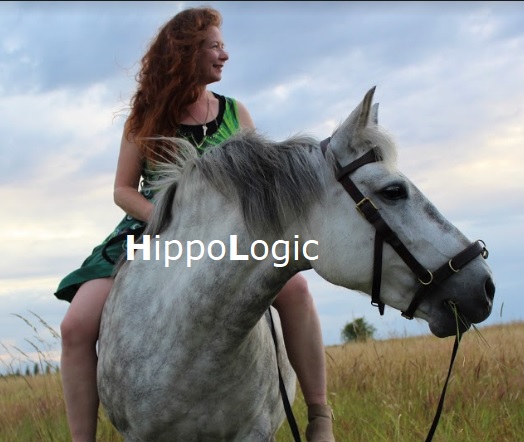
 because we (‘we’ = R+ trainers, instructor or not) present it like that (almost) all the time!
because we (‘we’ = R+ trainers, instructor or not) present it like that (almost) all the time! 

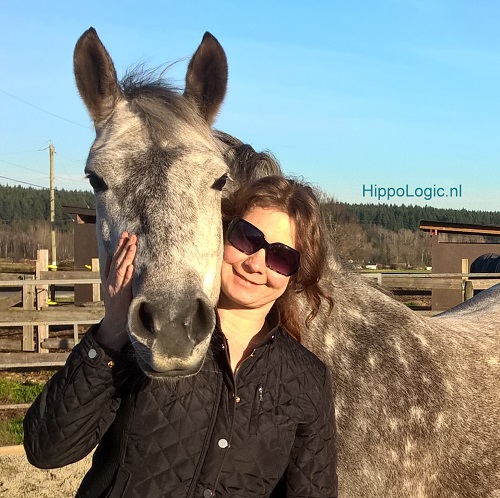
 That carrying treats and a clicker is a burden, is just a matter of perspective. Horse people are carrying tools around all the time. Most of them way heavier and bigger than a box clicker (which you can replace by a verbal marker or a tongue click) and a pocket full of treats. Think of whips (riding crops or lunge whips), training sticks or heavy lead ropes to name a few.
That carrying treats and a clicker is a burden, is just a matter of perspective. Horse people are carrying tools around all the time. Most of them way heavier and bigger than a box clicker (which you can replace by a verbal marker or a tongue click) and a pocket full of treats. Think of whips (riding crops or lunge whips), training sticks or heavy lead ropes to name a few. One huge advantage of positive reinforcement is that you teach the horse to choose to follow your cues. You make positive associations in training all the time.
One huge advantage of positive reinforcement is that you teach the horse to choose to follow your cues. You make positive associations in training all the time.


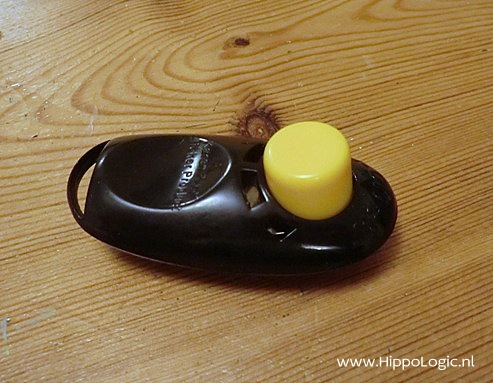




 Train wanted behaviour quickly
Train wanted behaviour quickly Feeding treats as a reward won’t necessarily get you the desired outcome. You have to use treats as reinforcer. To strengthen behaviour, not just to reward behaviour.
Feeding treats as a reward won’t necessarily get you the desired outcome. You have to use treats as reinforcer. To strengthen behaviour, not just to reward behaviour.



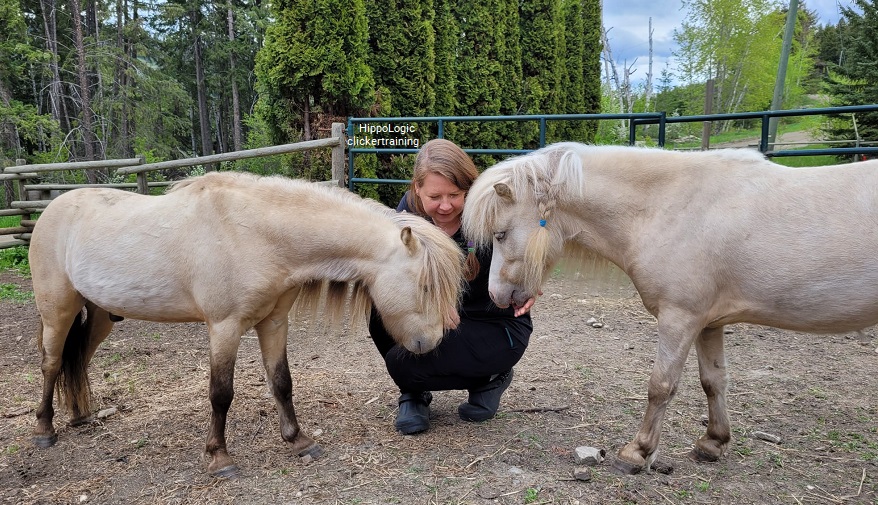


 First you need to know that it’s the receiver (horse) that determines the reinforcer, not the trainer!
First you need to know that it’s the receiver (horse) that determines the reinforcer, not the trainer! High value reinforcers can help your horse to increase his own criteria of a certain behaviour because the value of the treat excites him.
High value reinforcers can help your horse to increase his own criteria of a certain behaviour because the value of the treat excites him. High value reinforcers can be well used when your horse is nervous, in pain or if something else (a distraction) is also highly reinforcing.
High value reinforcers can be well used when your horse is nervous, in pain or if something else (a distraction) is also highly reinforcing. Here are the 3 reasons I heard the most.
Here are the 3 reasons I heard the most.

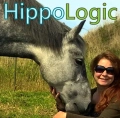




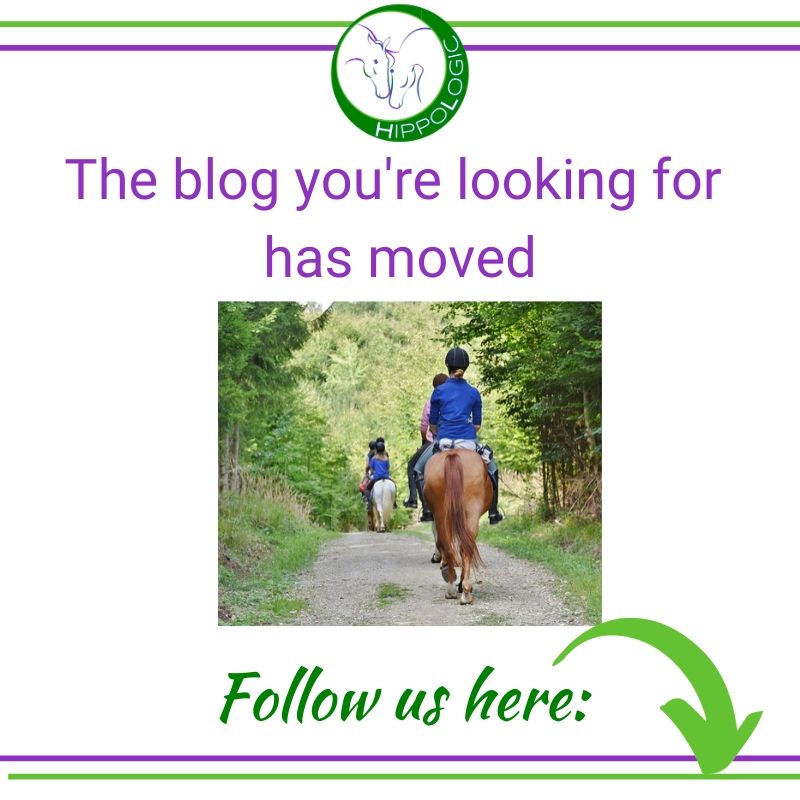
 something he wants’ (positive reinforcement, R+)?
something he wants’ (positive reinforcement, R+)?





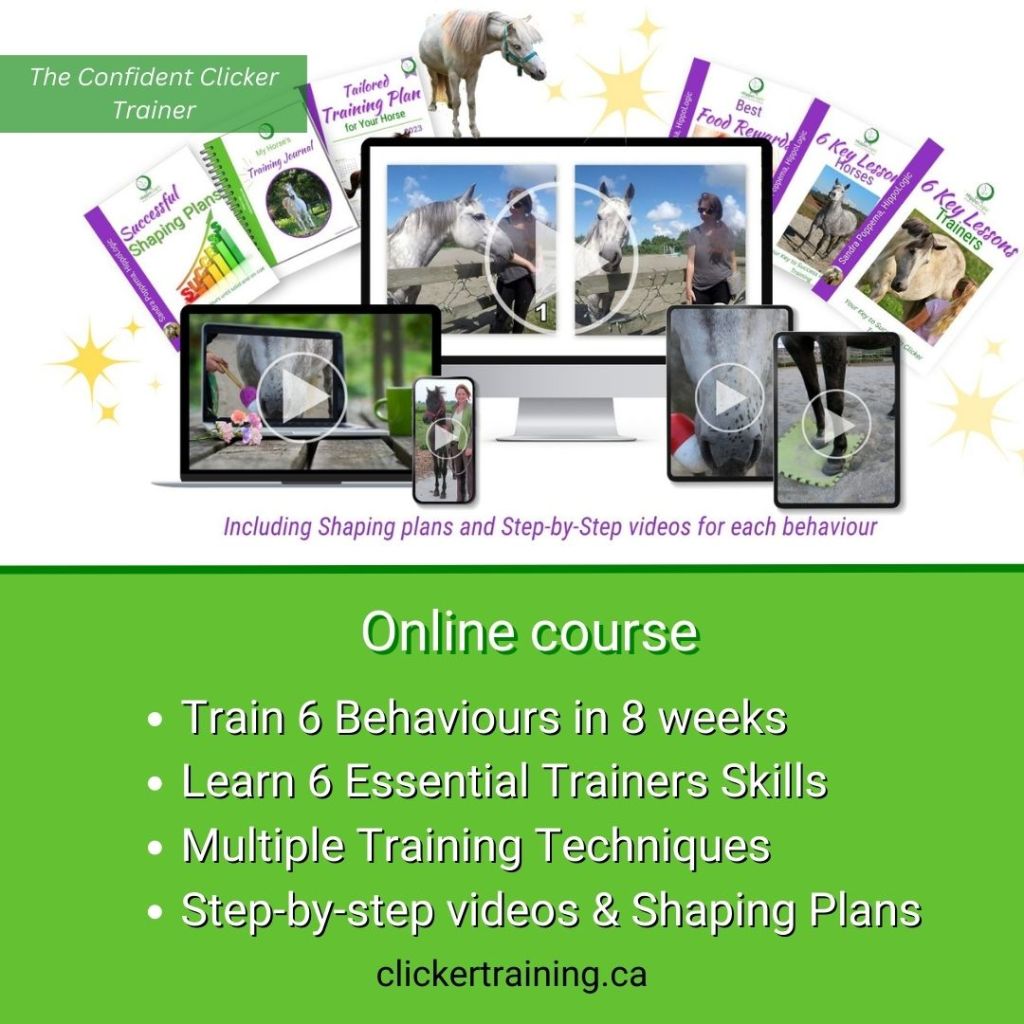






You must be logged in to post a comment.